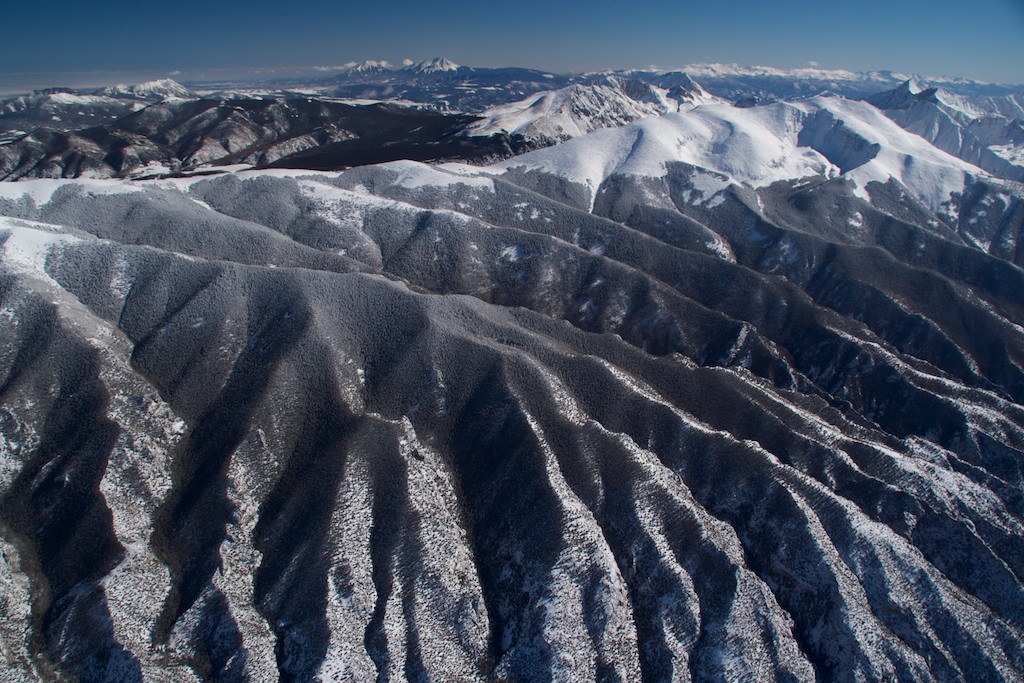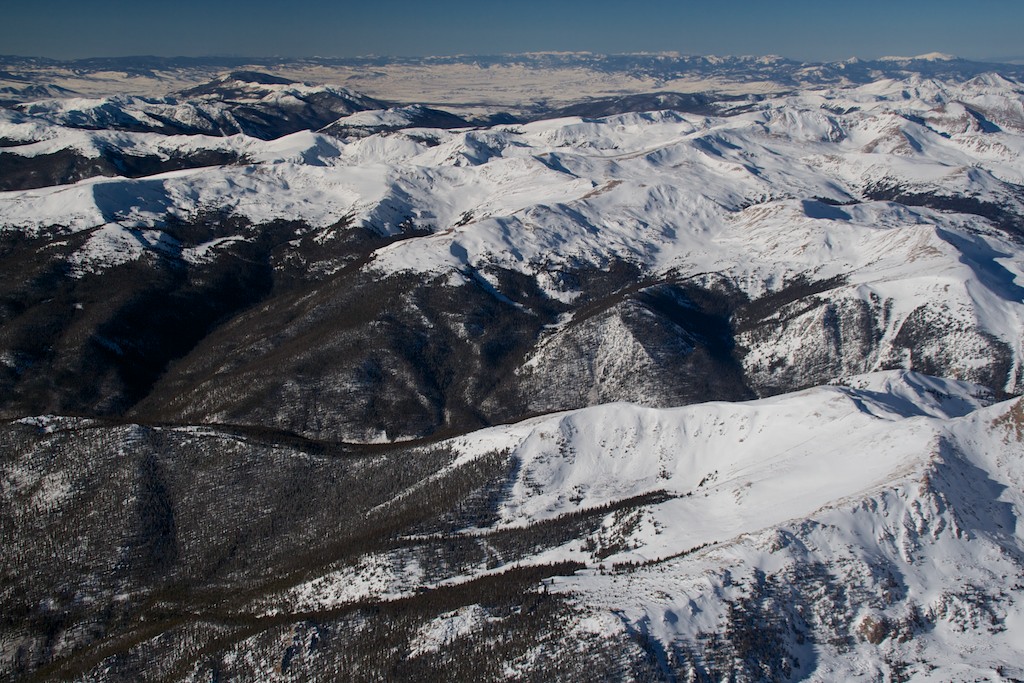I first saw the Sangre de Cristo Mountains many years before moving to Colorado. It was an idyllic Colorado day – bluebird skies, crisp air, and snow on the peaks with none in the valley. As I saw Great Sand Dunes for the first time, I figured that I understood exactly why the range got its name.
“Sangre de Cristo” means “blood of Christ” in Spanish. While the Spanish were ostensibly pious, the question of what they were devoted to was ever present. Nonetheless, I imagined a Spanish envoy traversing the San Luis valley seeking a suitable location for a mission – through a land that spoke more about its inconveniences than its beauty – burning, sandy soil, hot air, dry wind, and strong sun. When the Spaniards first laid their eyes on the mountain range, I am sure they exclaimed “Sangre de Cristo!” – not out of piety, rather similar to how we preface not so holy exclamations with “Holy….!”
Despite seeing these mountains numerous times, the aerial view elicited my own holy exclamations from the cockpit. While the range shares many characteristics with the rest of the mountains of Colorado, there is something completely different about them that I have had to work to identify. With peaks exceeding 14,000 feet, the mountains rise abruptly from a valley that is flat as a pancake and remarkably wide. Further, the peaks are nearly uniform, like the blades of a saw – making many other Colorado ranges look asymmetrical and disorganized. Within the sawtooth nature of the peaks, there are short valleys running perpendicular that look like fins. To top it all off, the valley is home to grasses and sagebrush with immediate pine forests at the mountain base and an accent of timberline. The Sangre de Cristo range is a work of finely chiseled natural composition.
I decided to validate my imaginary assumption about the naming of the range. While it is not the story of privation and relief that I so whimsically dreamt up, it’s close enough. Antonio Valverde, a Spaniard who served in various government positions in New Mexico named the range in 1719. He was so moved by the red alpenglow of sunrise bathing the snowy peaks that he named them accordingly. While sunrises do happen all over the planet on a daily basis, this man was as awestruck 295 years ago as we are today seeing the same sight. He chose to name this beauty based on what was one of the most respected and revered symbols of his era.







